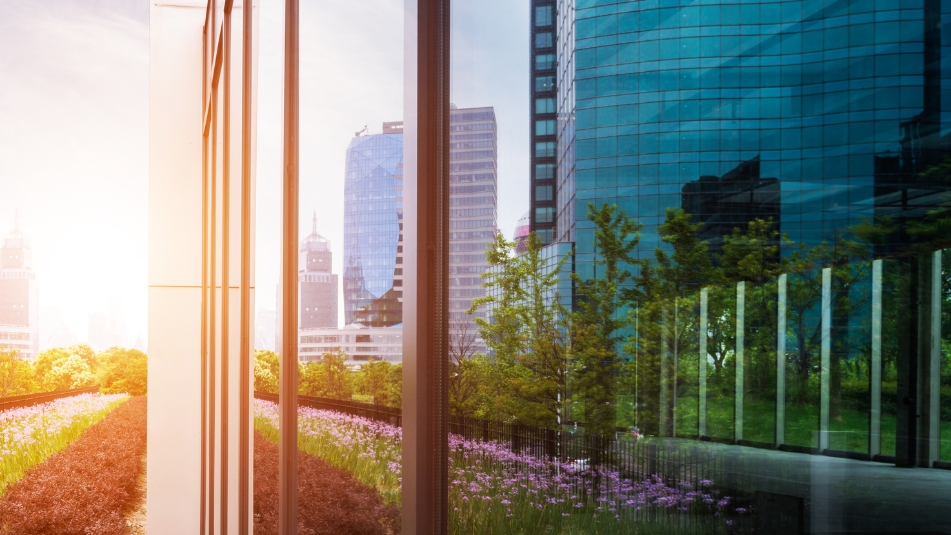5 Office Design Tips For Better Mental Health
Productivity is at a 75-year low and most are pointing their fingers at work from home. But now that big tech and other influential companies have gone back to the office, we've noticed the focus is now on mental health in the workplace.
The big question you should be asking yourself is: is the office space we’re offering positively or negatively affecting my employees’ mental health? The answer to this is an important driving factor for productivity, retention of top talent, and willingness to come back to the office more than ever before. Here are a few office design tips that may boost mental health in the workplace:
Incorporating Nature
One of the biggest office trends we have seen over the past decade is biophilic design. Biophilic design is a concept to increase occupant connectivity to the natural environment through direct nature, indirect nature, and space and place conditions. The more direct or indirect nature employees receive in the office place yields a happier workplace. The introduction of plants, wooden and natural materials, water, life such as fish, and natural light has reduced stress. Additionally, the introduction of raw materials can make an open office plan less noisy with multiple pathways and varying floor and ceiling heights that encourage movement throughout the office.
If you don’t have outdoor space in your office and don’t want to move, you have the option to bring outdoor elements inside. When we chatted with our friends last year at Schrimmer Design Group and Lebel & Bouliane for our article on the “6 office design trends post COVID-19,” they told us, “The trend to healthier and greener interior spaces will continue. For many of our office interior projects, we include a landscape consultant …. incorporating plants and green walls into all our spaces allows for connection to the natural world, calm, as well they practically deal with cleaning and filtering the air. Also, with more open collaboration (and frankly talking 6′ apart…) will increase the need for better acoustically performing spaces, so more attention to acoustic materials and design will be key.” Beyond the materials, incorporating outdoor elements in indoor spaces has increased concentration and focus, improved creativity and problem-solving abilities, and increased happiness and retention.
Natural Light
Natural light helps reduce anxiety, stress, and depression. Many offices are gravitating to open floor plans because it was a great way to increase natural light throughout the office. Natural light was usually reserved for executive offices and conference rooms for Clients.
But let’s be honest. Not all office buildings were built thinking natural light was needed to increase employee productivity. Many old buildings were constructed not to include natural light. You can do things if you have a naturally dark office space, including circadian lighting that mimics the changing composition of light throughout the day. This has been shown to improve mood, concentration, and sleep quality.
Community
Arguably the most crucial part of any workplace is the office culture. Most businesses are built on the backs of the concept of office culture. And with COVID-19 causing many to work from home, office culture disappeared. Yes, some companies turned their zooms into happy hours or found ways to bring their employees together virtually (we have read a lot about VR ping pong tournaments), but overall, office culture took a slide. You must ask yourself what you are offering to your employees that is different from others, because why is someone working from home going to care much about what office or company they are working for? People work at Google and Apple for office perks. Office culture is and will always be tied to recruiting and retention, and if you want to recruit top-tier talent and wish to retain their talent, you must build community. Don’t abandon what makes your business unique because you have seen a headline or had a dinner conversation with someone about how everyone will be working from home and the office is dead. It’s not.
Community is key in ensuring your employees feel useful, have agency, and have human interaction, which are all elements of better mental health. Additionally, it is vital for each human to feel like part of something bigger than themselves. Having a collaborative office environment will yield more employees feeling like they belong, which will lead to higher productivity and a healthier environment.
Some employees can’t wait to be back in the office because of their mental health, while others have anxiety about returning 9-5. A good way to appease all parties is to allow for flexible work, which increases employee morale and overall productivity. Many employees have gotten used to working from home, and although most want to return to the office, it may not be practical for everyone due to child and elderly care issues. Additionally, some people may be more productive at home to focus on their mental and physical wellness. Each of us is more attuned to our health and wellness, and for many, we do not want to go back but instead move forward with what we have learned over the past year. Office spaces will need to accommodate those who work out of the office at times. Including floating desks, more shared spaces, smaller conference rooms, technology that makes the transition from home to office seamless, and office spaces that provide safe spaces.
Offer affordable mental health care benefits
Do the health care plans that you offer employees include mental health coverage? And if so, are you communicating to your employees that are not only available but encouraged?
By looking for a health care provider that provides affordable and convenient mental health services, you can save both your company and your employees’ money. Additionally, your human resources department provides your employees with a mental health roadmap that connects your employees to the appropriate mental health providers, applications, or wellness centers.
Additionally, offering mental health paid leave will encourage employees to attend to their health. Some companies have successfully provided a paid mental health day or week to all employees simultaneously, while others offer a physically delivered sick day as they would. It is vital to normalize the use of a Mental Health Day. What’s the point of providing these kinds of benefits if you don’t use them?
Reduce the stigma at the office
For your employees to be open with you and improving themselves and, therefore, their work productivity, you as a company must put in the work to reduce the stigma around mental health in and around the workplace. If you can reduce the negativity of addressing one’s mental health, you can establish a more conducive and honest workplace. Some ways to achieve this include being open with your employees about your mental health struggles, implementing an employee assistance program that includes a counseling program that assists employees with handling problems that may affect their work, having wellness-related amenities such as wellness rooms, and partnerships with wellness apps, and implement sensitivity training for all managers that train them on how to identify and address mental health issues in themselves and their co-workers.
Open communication is critical and making mental health something that gets actively discussed in the workplace, whether it’s a seminar, an internal storytelling campaign, an email communication, or a work-wide mental health day/week (which Nike just did), the more you make mental health the norm, something to talk about and work on, the better and more productive your employees will be.
For mental health resources: https://www.thementalhealthcoalition.org/resources/



